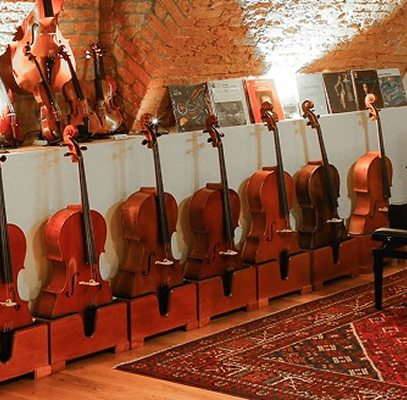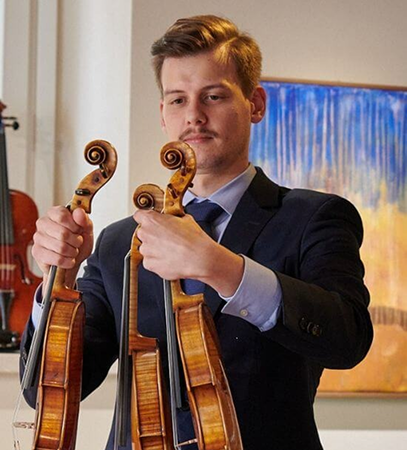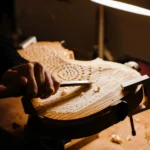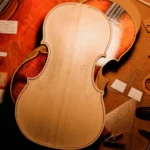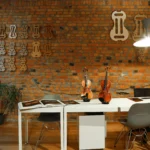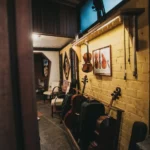Antonio Stradivari: The Best Works of the Master
Back to BlogFew names in music history carry as much reverence as Antonio Stradivari, who is a great inspiration for us at Amorim.
His violins, known as Stradivarius, are symbols of perfection instruments that have transcended centuries, still played by the greatest musicians of our time. From the intimate workshops of Cremona, Italy, Stradivari transformed the art of violin making into a science of sound, precision, and beauty.
Collectors, luthiers, and performers alike remain captivated by the mystery behind his craftsmanship: What makes a Stradivarius sound so unique? How did he achieve such balance and resonance without the modern tools available today?
To truly appreciate the legacy of these instruments, one must understand the significance of Stradivari’s greatest works. Masterpieces that set the standard for excellence in instrument craftsmanship.
Who was Antonio Stradivari?
Antonio Stradivari, born in 1644 in Cremona, is known as the greatest violin maker of all time. For 71 years, he crafted violins, violas, and cellos, a lengthy career for someone living in the 17th and 18th centuries. He understood how sound resonated, studied how precisely to shape wood, and searched for the elusive ingredients to encourage it to resonate freely.
Although he was not born into a family of violin makers, he began an apprenticeship with the notable citizen Nicola Amati in Cremona when he was young. The master developed his skills and deepened his knowledge, and then became the great luthier as we know him today.
Learn more: Top 5 Facts About Stradivari: The history of the Stradivari Violin
How many instruments did Stradivarius make?
It is estimated that Antonio Stradivari crafted between 1,100 and 1,200 instruments during his lifetime. Around 650 of them still exist today, including violins, violas, cellos, guitars, and harps. His violins, often referred to simply as Stradivarius, are famous for their perfect balance of craftsmanship, tone, and resonance.
The period between 1700 and 1720, often called Stradivari’s “Golden Period,” produced his most celebrated masterpieces, instruments that remain benchmarks for luthiers and musicians alike.
The best works of Antonio Stradivari
Stradivari’s instruments represent the highest standards of craftsmanship from the Cremonese school.
Each piece reflects his technical precision, attention to detail, and deep understanding of acoustics, making them enduring references for violin makers and musicians around the world.
Betts, 1704
One of the most legendary violins crafted by Stradivari, this instrument perfectly represents the golden period. Produced in 1704, it has been owned by the French maker Jean-Baptiste Vuillaume and London fine instrument dealers W.E. Hill & Sons. Still intact after hundreds of years and various owners, today the Betts is owned by the Library of Congress in Washington DC.
The ‘Gibson, Huberman,’ 1713
This violin was stolen twice in its lifetime. The first time it was returned to its owner, however the second time it was stolen from Israeli violinist Bronislaw Huberman and wasn’t recovered until fifty years later after a deathbed confession from Julian Altman. Joshua Bell then acquired it in 2001 and played it until he sold the instrument to Norbert Brainin.
Soil, 1714
The ‘Soil’ violin was crafted by Antonio Stradivari during the peak of his Golden period, at a time when he was using the finest materials and working with impeccable precision. Itzhak Perlman acquired the instrument in 1986 after it had been passed down through several owners. He has described the instrument as being “the best sounding instrument ever made by Antonio Stradivari.”
The Harrison, 1693
The Harrison, dubbed the greatest concert violin pre-1700 and one of very few violins to survive with its original neck, was named after 19th-century English solicitor and amateur musician Richard Harrison. Today it belongs to the National Music Museum.
The Lord Aylesford, 1696
This 1715 Stradivari cello has a rich red varnish and is one of only fifty instruments that have survived to the present day. It was originally owned by Lord Aylesford; an amateur cellist, he kept it for around one hundred years before passing it on to a number of subsequent owners from all over the world.
One of the owners, cellist Gregor Pitiagorsky, was also a Russian-American. He played on the Domenico Montagnana’ Sleeping Beauty’ cello, which is now owned by the Nippon Music Foundation and loaned to Pablo Ferrández.
The Molitor, 1697
‘The Molitor’ was named after a young general in Napoleon’s army, Gabriel-Jean-Joseph Molitor. Molitor was a distinguished soldier and 19th-century musician who was also an avid violin lover. Another one of ‘The Molitor’s’ many owners was American violinist Elmar Oliveira, who is now a client of Amorim Fine Violins, owning a ‘del Gesù’ copy by Luiz Amorim.
The Clisbee, 1669
Stradivari may not have had enough money during his early years of making stringed instruments to buy the best wood, so his early violins were made of wood that was not as pretty as the wood used in his later violins. However, ‘The Clisbee’ was exquisitely varnished with a yellow-brown coat.
Owned by Mrs. Clisbee, a pupil of Andreas Moser, this violin was also used by the Joachim Quartet. In 2003, it was donated to the town of Cremona and is now being exhibited at Museo del Violino.
Hellier, 1679
Stradivari’s second inlaid violin, the ‘Hellier’, shows he was not limited to carving wood. This violin’s size is more prominent than those from the same period. The ‘Hellier’ was consigned to the Stradivari Foundation in Cremona as part of its ‘Friends of Stradivari’ project, where it was displayed at the Museo del Violino. Now, it is back with its owner in Switzerland.
La Pucelle, 1709
Crafted in 1709, La Pucelle is one of the best-preserved Stradivari violins ever made. The name was given by Parisian dealer and luthier Jean-Baptiste Vuillaume, who, after disassembling the instrument for maintenance, discovered to his amazement that it had remained completely untouched since it left Stradivari’s workshop.
At Amorim Fine Violins, a faithful copy of La Pucelle has been created (and sold), maintaining the same tonal qualities and aesthetic details as the original. Finished with a bright reddish-brown varnish and meticulous attention to detail, this copy pays tribute to the timeless elegance and acoustic excellence of Stradivari’s original masterpiece.
Find a copy or a antique violin ir our collection
At Amorim Fine Violins – Cremona, we honor Stradivari’s legacy through our curated collection of fine instruments and contemporary master copies. Whether you are a musician searching for your perfect sound or a collector looking for a unique investment, our team helps you find a violin that echoes the brilliance of the Cremonese masters.
Explore our collection of violins and experience the timeless craftsmanship inspired by Antonio Stradivari.

